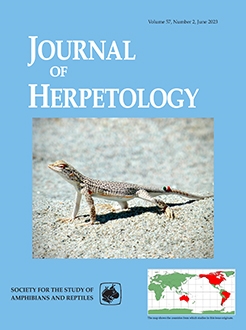Differentiation in resource use by sympatric species reduces competition and allows coexistence. Constraints imposed both by evolutionary history and current ecological interactions strongly influence the coexistence of distinct anuran species. In this context, we analyzed the dietary habits of two sympatric frogs in a Batesian mimicry system, Ameerega pulchripecta and Allobates femoralis, to assess potential resource overlap and competition between them. We explored the hypothesis that differences in feeding behavior and prey choice reflect these species' status as co-mimics in a Batesian system because toxicity in anurans is strongly related to diet. We obtained stomach contents by applying the stomach-flushing technique and data on prey availability through pitfall traps arranged along both sides of the trail where the sympatric species occur. We found that the toxic A. pulchripecta actively selects ants and mites as prey, while the nontoxic A. femoralis feeds opportunistically on beetles, ants, and other sedentary prey such as larval insects and adult spiders. Based on dissimilarity, diversity, electivity, and evenness analysis we concluded that the two frog species exhibited a significant difference in prey composition. We suggest that these differences found in the feeding habits are important to the syntopic coexistence of these two frog species in our study area.
BioOne.org will be down briefly for maintenance on 17 December 2024 between 18:00-22:00 Pacific Time US. We apologize for any inconvenience.
How to translate text using browser tools
19 December 2023
What Do Co-Mimics eat? Trophic Ecology of Ameerega pulchripecta (Anura, Dendrobatidae) and Allobates femoralis (Anura, Aromobatidae) in Eastern Brazilian Amazonia
Patrick R. Sanches,
Luã E. Santos-Guerra,
Fillipe Pedroso-Santos,
Igor L. Kaefer,
Carlos E. Costa-Campos
ACCESS THE FULL ARTICLE

Journal of Herpetology
Vol. 57 • No. 4
December 2023
Vol. 57 • No. 4
December 2023




